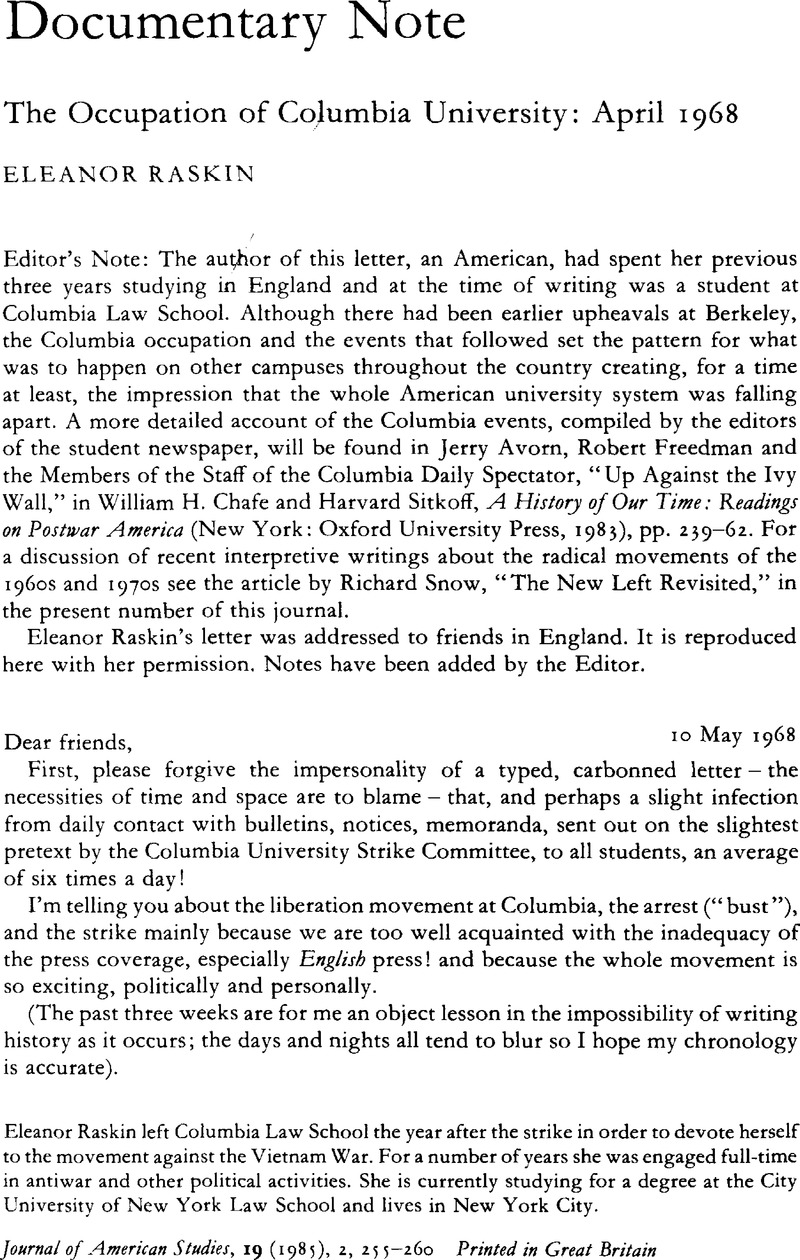Article contents
The Occupation of Columbia University: April 1968
Published online by Cambridge University Press: 16 January 2009
Abstract

Information
- Type
- Documentary Note
- Information
- Copyright
- Copyright © Cambridge University Press 1985
References
Eleanor Raskin left Columbia Law School the year after the strike in order to devote herself to the movement against the Vietnam War. For a number of years she was engaged full-time in antiwar and other political activities. She is currently studying for a degree at the City University of New York Law School and lives in New York City.
1 Officially this demonstration had been organized by SDS to protest against the University's affiliation with the Institute of Defense Analyses, a body responsible for carrying out research on behalf of the military. However it was also designed to test the University's response to the flouting of a recent edict issued by its President, Grayson Kirk, forbidding the holding of protest meetings within University buildings. Avorn, p. 240.
2 Stokely Carmichael, West Indian-born Chairman of the Student Non-Violent Coordinating Committee (SNCC) responsible for popularizing the “Black Power” slogan.
3 Other participants bear witness to this although some were disappointed that the blacks had chosen to segregate themselves in Hamilton and many were later surprised and dismayed at the ease with which the police took over the building. Avorn, pp. 249, 257.
4 H. Rap Brown, like Carmichael one of the leaders of SNCC, noted for his fiery oratory in support of black solidarity.
5 Tom Hayden had drafted the Port Huron Statement (1962) which provided the SDS with an agenda for action. He had also attracted national media attention at the time of the Berkeley disturbances.
6 This slogan, taken from Leroi Jones, was first used in an open letter from Mark Rudd, Chairman of the Columbia SDS Steering Committee, to President Grayson Kirk on 22 April, the day before the disturbances began. The letter began “Dear Grayson” and ended “There is only one thing left to say. It may sound nihilistic to you, since it is the opening shot in a war of liberation. I'll use the words of Leroi Jones, whom I'm sure you don't like a whole lot: ‘Up against the wall, motherfucker, this is a stick-up.’ Yours for freedom. Mark.” Avorn, p. 243.
7 Angered by the brutality of the police, the unyielding attitude of the University authorities and the continuing carnage in Southeast Asia a number of Columbia radicals later joined the Weatherman faction of SDS. For a statement of their views see “You Don't Need a Weatherman to Know Which Way the Wind Blows” in Chafe and Sitkoff, pp. 235–38.
- 1
- Cited by

